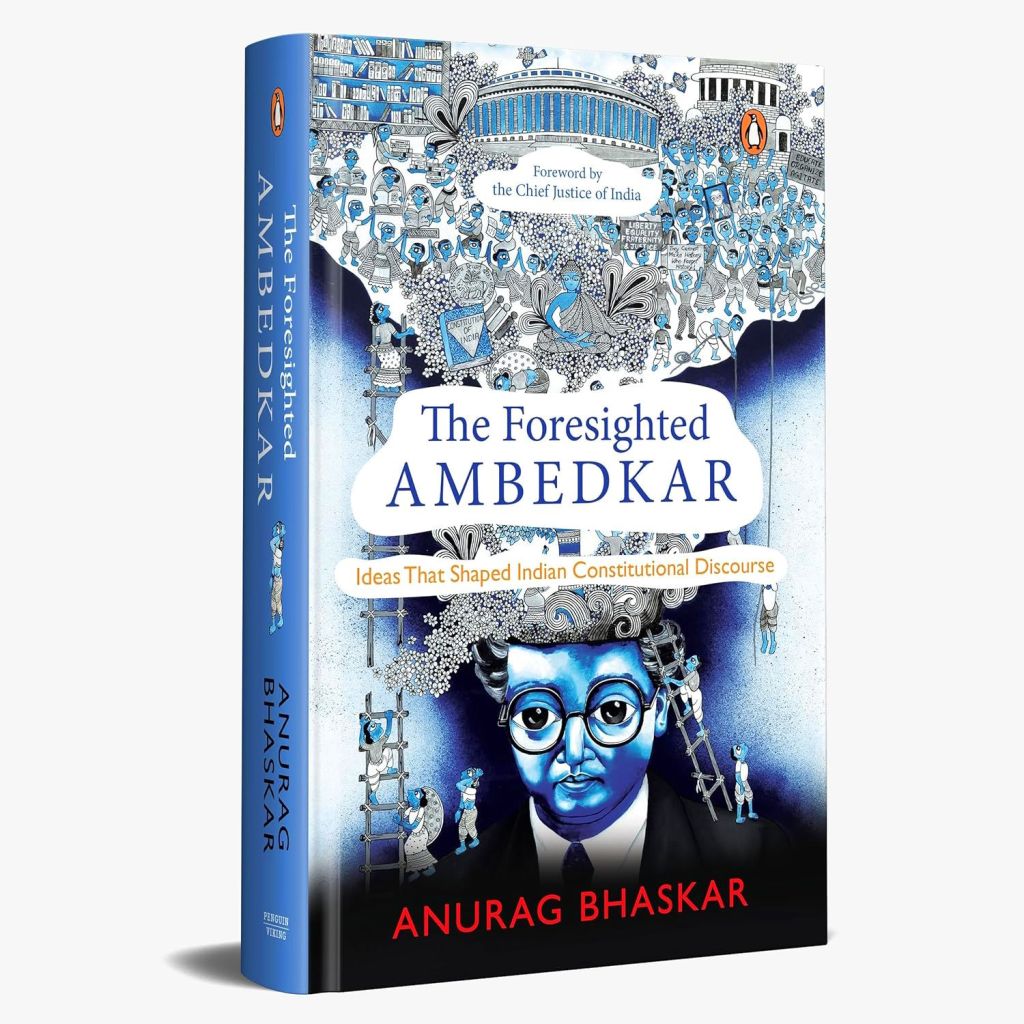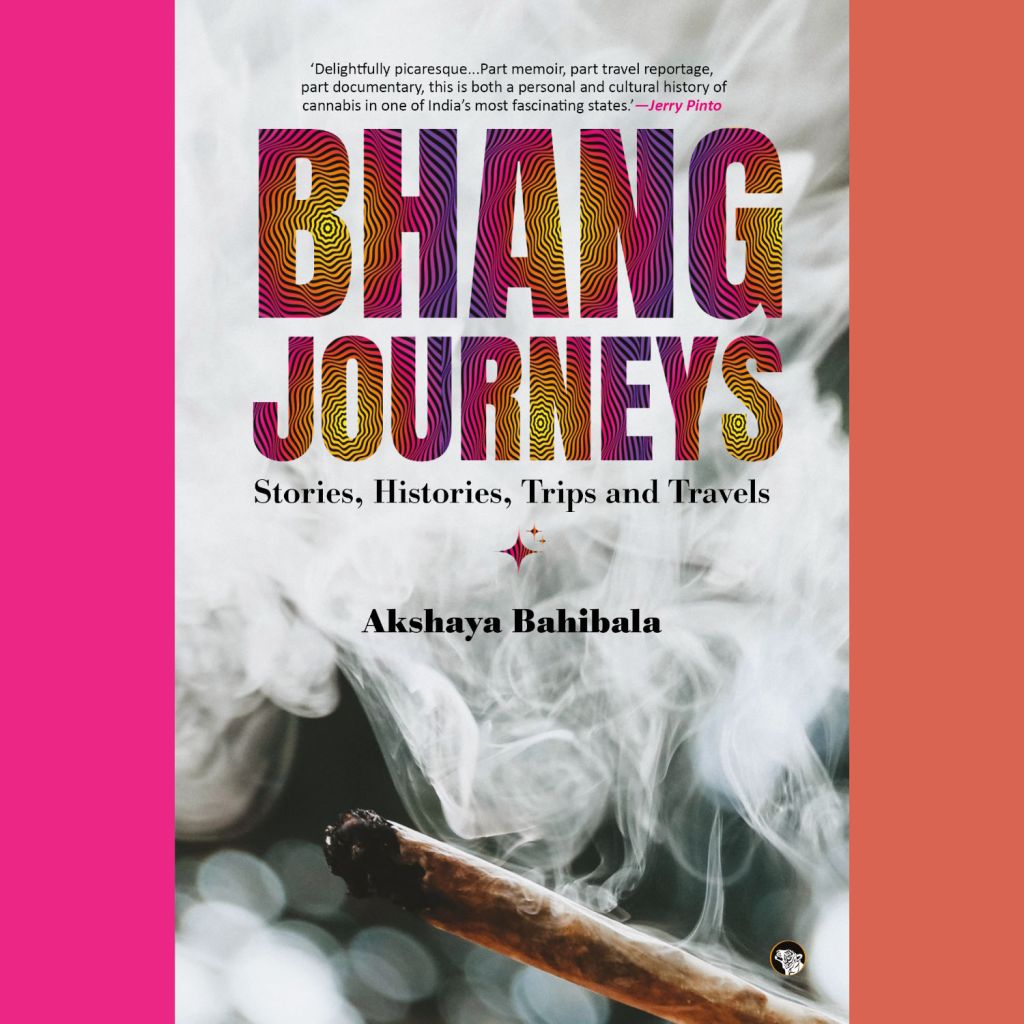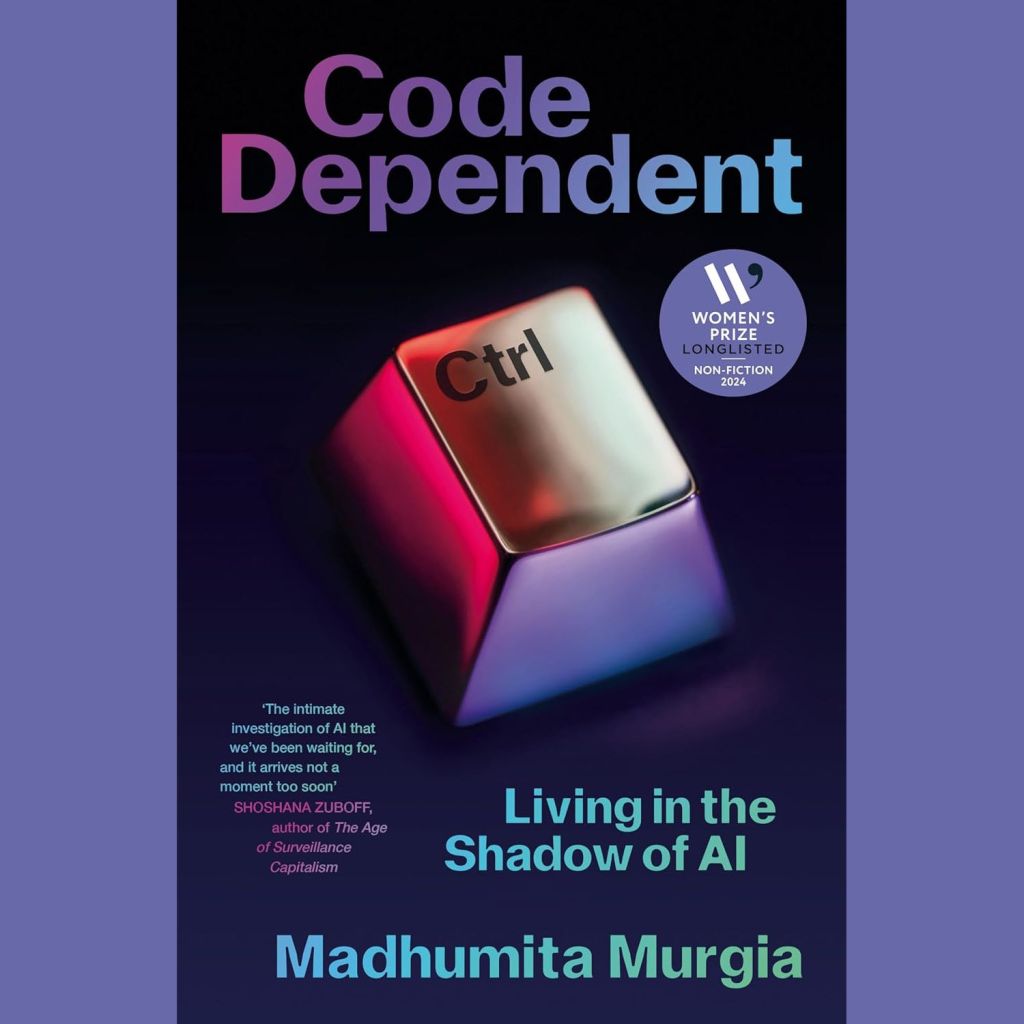Japan is one of the most fascinating countries on the planet. There is an otherworldliness about it that’s strangely intriguing. The culture, the customs, the traditions, the people – in addition to the country’s food, art, theatre and cinema – everything about Japan is an enigma, at least to most outsiders. Whether you’ve already visited the country and fallen in love with it, or whether you’re planning to visit in the near future, here are some books you’ll love reading if you’re a Japanophile.

Pure Invention: How Japan Made The Modern World, by Matt Alt
‘The Walkman. Karaoke. Pikachu. Pac-Man. Akira. Emoji. We’ve all fallen in love with one or another of Japan’s pop-culture creations, from the techy to the wild to the super-kawaii. But as Japanese-media veteran Matt Alt proves in this brilliant investigation of Tokyo’s pop-fantasy complex, we don’t know the half of it. Japan’s toys, gadgets, and fantasy worlds didn’t merely entertain. They profoundly transformed the way we live. In the 1970s and ’80s, Japan seemed to exist in some near future, soaring on the superior technology of Sony and Toyota while the West struggled to catch up. Then a catastrophic 1990 stock-market crash ushered in the ‘lost decades’ of deep recession and social dysfunction. The end of the boom times should have plunged Japan into irrelevance, but that’s precisely when its cultural clout soared – when, once again, Japan got to the future a little ahead of the rest of us,’ says the publisher’s note.
‘Hello Kitty, the Nintendo Entertainment System, and multimedia empires like Pokémon and Dragon Ball Z were more than marketing hits. Artfully packaged, dangerously cute, and dizzyingly fun, these products made Japan the forge of the world’s fantasies, and gave us new tools for coping with trying times. They also transformed us as we consumed them – connecting as well as isolating us in new ways, opening vistas of imagination and pathways to revolution. Through the stories of an indelible group of artists, geniuses, and oddballs, Pure Invention reveals how Japanese ingenuity remade global culture and may have created modern life as we know it. It’s Japan’s world; we’re just gaming, texting, singing, and dreaming in it,’ it adds.
‘The book begins with an overview of how the video game Final Fantasy VII was marketed in the United States—as an unabashedly Japanese product. Overseas fans loved this cultural authenticity, and Alt wanted to investigate why that was. Eventually, he concludes: ‘It wasn’t that foreign consumers wanted things more Japanese. It was that they were increasingly resembling the Japanese themselves… Japanese creators and consumers weren’t just trendsetters. They were harbingers for all the weirdness of our late-state capitalist lives.’ A fact-packed book that could only have been written by somebody immersed in both cultures, Pure Invention posits that Japan both fascinates Americans as a futuristic fantasy and resonates with us in a strangely familiar way is because we are becoming more similar all the time. Pure Invention feels like Alt’s magnum opus, a culmination of what his previous work has been gearing toward,’ says Forbes.

Japan Story: In Search of a Nation, by Christopher Harding
‘It is told through the eyes of people who greeted this change not with the confidence and grasping ambition of Japan’s modernizers and nationalists, but with resistance, conflict, distress. We encounter writers of dramas, ghost stories and crime novels where modernity itself is the tragedy, the ghoul and the bad guy; surrealist and avant-garde artists sketching their escape; rebel kamikaze pilots and the put-upon urban poor; hypnotists and gangsters; men in desperate search of the eternal feminine and feminists in search of something more than state-sanctioned subservience; Buddhists without morals; Marxist terror groups; couches full to bursting with the psychological fall-out of breakneck modernization. These people all sprang from the soil of modern Japan, but their personalities and projects failed to fit. They were ‘dark blossoms’: both East-West hybrids and home-grown varieties that wreathed, probed and sometimes penetrated the new structures of mainstream Japan,’ says the publisher’s note.
‘There is a real street-level style to the narrative in Japan Story; even choosing to call it a narrative speaks volumes about the intimacy with which we are told Japan’s story. Each chapter has a focus on individual people, rather than places or groups. We learn of Marxist revolutionaries, Christian converts, modern philosophers, and feminist poets who all struggled through a time when the rhetoric of Japan’s government and bourgeoisie vilified all of the above,’ says Books & Bao.

Convenience Store Woman, by Sayaka Murata (Author) and Ginny Tapley Takemori (English Translator)
‘The English-language debut of an exciting young voice in international fiction, selling 660,000 copies in Japan alone, Convenience Store Woman is a bewitching portrayal of contemporary Japan through the eyes of a single woman who fits in to the rigidity of its work culture only too well. It is a heart-warming and surprising story of thirty-six-year-old Tokyo resident Keiko Furukura, who has never fit in, neither in her family, nor in school. But when at the age of eighteen she begins working at the Hiiromachi branch of ‘smile mart,’ she finds peace and purpose in her life. In the store, unlike anywhere else, she understands the rules of social interactions are laid out line by line in the store’s manual, and she does her best to copy the dress, mannerisms and speech of her colleagues, playing the part of a ‘normal’ person excellently, more or less. Managers come and go, but Keiko stays at the store for eighteen years. It’s almost hard to tell where the store ends and she begins. Keiko is very happy, but the people close to her, from her family to her co-workers, increasingly pressure her to find a husband and to start a proper career, prompting her to take desperate action. A brilliant depiction of an unusual psyche and a world hidden from view, Convenience Store Woman is an ironic and sharp-eyed look at contemporary work culture and the pressures to conform, as well as a charming and completely fresh portrait of an unforgettable heroine,’ says the publisher’s note.
‘This deadpan Japanese tale of an oddball shop assistant possesses a strange beauty. It’s the novel’s cumulative, idiosyncratic poetry that lingers, attaining a weird, fluorescent kind of beauty all of its own. The world of the store with its dented cans and rice balls and barcodes and scanners, and Keiko’s shivery, unashamedly sensual response as a ‘convenience store animal’ who can ‘hear the store’s voice telling me what it wanted, how it wanted to be.’ The book’s title is more than perfect, for this, you soon realise, is a love story. Keiko’s love story: the convenience is all hers,’ says The Guardian.

Japanese Tattoos: History * Culture * Design, by Brian Ashcraft and Hori Benny
‘Thinking of getting a Japanese-style tattoo? Want to avoid a permanent mistake? Japanese Tattoos is an insider’s look at the world of Japanese irezumi (tattoos). Japanese Tattoos explains the imagery featured in Japanese tattoos so that readers can avoid getting ink they don’t understand or, worse, that they’ll regret. This photo-heavy book also traces the history of Japanese tattooing, putting the iconography and kanji symbols in their proper context so readers will be better informed as to what they mean and have a deeper understanding of irezumi. Featured tattoos range from traditional tebori (hand-poked) and kanji tattoos to anime-inspired and modern works, as well as everything in between. For the first time, Japanese tattooing is put together in a visually attractive, informative, and authoritative way,’ says the publisher’s note. ‘Along with the 350+ photos of tattoos, Japanese Tattoos also features interviews with Japanese tattoo artists on a variety of topics. What’s more, it contains interviews with clients, who are typically overlooked in similar books, allowing them to discuss what their Japanese tattoos mean to them. Those who read this informative tattoo guide will be more knowledgeable about Japanese tattoos should they want to get inked or if they are merely interested in Japanese art and culture,’ it adds.
‘Both authors use extensive knowledge of Japanese style tattooing and personal interviews to guide the novice away from committing any cultural faux pas in a work that spans 158 glossy pages. [What is] extremely impressive about this book was the sheer quantity and quality of the accompanying images. Not only are specific motifs and their meanings clearly explained, but the authors have also provided imagery and explanations of the images themselves. The reader is able to enjoy each and every motif – usually in more than one style. Both Ashcraft and Hori Benny did an exceptional job collecting the various photographs of irezumi for the book,’ says Japan Subculture. ‘The depth of research in Japanese Tattoos is a major strength. There’s such attention to detail given to each cultural theme, and the history of irezumi is explained very thoroughly. By the end you’ll have all your burning questions about Japanese tattoo culture answered. And more importantly, you’ll learn the meaning behind Japanese tattoos, so you’ll come away smarter and better able to make tattoo decisions,’ adds Tofugu.

The Bells of Old Tokyo: Travels in Japanese Time, by Anna Sherman
‘For over 300 years, Japan closed itself to outsiders, developing a remarkable and unique culture. During its period of isolation, the inhabitants of the city of Edo, later known as Tokyo, relied on its public bells to tell the time. In her remarkable book, Anna Sherman tells of her search for the bells of Edo, exploring the city of Tokyo and its inhabitants and the individual and particular relationship of Japanese culture – and the Japanese language – to time, tradition, memory, impermanence and history. Through Sherman’s journeys around the city and her friendship with the owner of a small, exquisite cafe, who elevates the making and drinking of coffee to an art-form, The Bells of Old Tokyo presents a series of hauntingly memorable voices in the labyrinth that is the metropolis of the Japanese capital. The result is a book that not only engages with the striking otherness of Japanese culture like no other, but that also marks the arrival of a dazzling new writer as she presents an absorbing and alluring meditation on life through an exploration of a great city and its people,’ says the publisher’s note.
‘Don’t expect a straightforward linear narrative. The Bells of Old Tokyo depicts the city as a sort of timepiece, a circle that can be started at any point—and also stopped and resumed. Tokyo’s past, although often physically erased by fires or constant demolition and construction in a nation that prizes change and modernization—is movingly excavated and evoked in this unusual book. The author has a nose for interesting stories, and each district yields its own fascinating slice of Japanese history,’ says The Wall Street Journal. ‘The author’s own layered process mirrors the city’s complexity, nonlinearity, and frozen beauty. The bells were not always easy to find, but Sherman was determined, and she successfully brings into focus their elusive stories, which point to an appealing past in a city that has moved rapidly into the future. Sharp attention to detail and a deliberate pace give this singular narrative history the sense of a shimmery, vanished past,’ adds Kirkus.

Lost Japan: Last Glimpse of Beautiful Japan, by Alex Kerr
‘An enchanting and fascinating insight into Japanese landscape, culture, history and future. Originally written in Japanese, this passionate, vividly personal book draws on the author’s experiences in Japan over thirty years. Alex Kerr brings to life the ritualized world of Kabuki, retraces his initiation into Tokyo’s boardrooms during the heady Bubble Years, and tells the story of the hidden valley that became his home. But the book is not just a love letter. Haunted throughout by nostalgia for the Japan of old, Kerr’s book is part paean to that great country and culture, part epitaph in the face of contemporary Japan’s environmental and cultural destruction. It is the winner of Japan’s Shincho Gakugei Literature Prize, and now comes with a new preface. Alex Kerr, an American writer, antiques collector and Japanologist, was the first foreigner to be awarded the Shincho Gakugei Literature Prize for the best work of non-fiction published in Japan,’ says the publisher’s note.
‘Since its original publication in 1993, Lost Japan by Alex Kerr has stood within the ranks of the more revelatory and nuanced works in a long line of publications unpicking the seeming exoticism and essential unfamiliarity of Japanese history and culture. From the very first page readers find themselves being guided through the author’s extraordinary Japanese journey through vivid accounts of traditional Japanese life, from the dramatic landscape of Shikoku to the dressing rooms of Tokyo’s most exclusive theatres and tea houses. With Penguin’s re-release of Lost Japan there is now the opportunity for a new generation of Japan enthusiasts to wander through this curious and complex mixture of biography and history, brought to life by Kerr’s expressive writing,’ says Japan Society.

Bending Adversity: Japan and the Art of Survival, by David Pilling
‘Despite years of stagnation, Japan remains one of the world’s largest economies and a country which exerts a remarkable cultural fascination. David Pilling’s new book is an entertaining, deeply knowledgeable and surprising analysis of a group of islands which have shown great resilience, both in the face of financial distress and when confronted with the overwhelming disaster of the 2011 earthquake and resulting tsunami. Bending Adversity is a superb work of reportage and the essential book even for those who already feel they know the country well,’ says the publisher’s note.
‘As anyone familiar with Japan knows, tenacity is highly celebrated as an individual and a collective trait. Words like ganbaru (to endure), ganbatte (keep going) and gaman (plucky resolve) pop up routinely in conversation. In Japan’s accounts of its own history, setbacks and the resulting brave rebounds play a central narrative role (much as the constant – movement westward does in America’s understanding of its past). This is also the way Pilling structures his story, with opening and closing sections about destruction and recovery in the devastated Tohoku region. Between them come extended discussions about Japan’s long record of dealing with adversity. When he is writing from his own observation, especially about the people and places transformed by the recent calamities, Pilling is eloquent and direct,’ says The New York Times. ‘Pilling draws on his own experiences, as well as interviews with novelists, academics, politicians, former prime ministers, executives, bankers, activists, and citizens young and old to provide a probing and insightful portrait of contemporary Japan, covering the country’s history, politics, culture, economy, society, and foreign policy,’ adds Publishers Weekly.

A History of the Samurai: Legendary Warriors of Japan, by Jonathan Lopez-Vera (Author), Russell Calvert (Translator)
‘A History of the Samurai tells the complete story of Japan’s legendary warrior class from beginning to end – an epic tale of intrigue, bloodshed and bravery that is central to an understanding of the Japanese character and of Japanese history. It describes in detail the core Samurai philosophy of Bushido – the way of the warrior – a complex code of conduct embracing ideals of honour and loyalty that continues to govern the Japanese way of life today,’ says the publisher’s note.
Historian Jonathan Lopez-Vera offers a compelling look at these enigmatic warriors including the lives of famous Samurai; Miyamoto Musashi, Japan’s greatest swordsman; Tomoe Gozen, the woman who became a Samurai; Tokugawa Ieyasu, the last Shogun; and many more. The tragic tale of the 47 Ronin who chose honour over their own lives and were forced to commit ritual suicide after avenging their fallen master. The philosophy of Bushido, ‘the way of the warrior,’ the code of conduct that embraced the ideals of honour and loyalty and governed the Samurai way of living and the decline of the Samurai and their transformation from rough, battle-hardened warriors to highly educated philosopher-poets. Illustrated with more than a hundred archival prints and photos, the nobility and grandeur of the Samurai is brilliantly showcased in this book. Readers will enjoy immersing themselves in the Samurai’s world, as historian Jonathan Lopez-Vera traces the fascinating story of the rise and fall of these enigmatic warriors throughout Japanese history,’ it adds.

A Brief History of Japan: Samurai, Shogun and Zen: The Extraordinary Story of the Land of the Rising Sun, by Jonathan Clements
‘This fascinating history tells the story of the people of Japan, from ancient teenage priest-queens to teeming hordes of salarymen, a nation that once sought to conquer China, yet also shut itself away for two centuries in self-imposed seclusion. First revealed to Westerners in the chronicles of Marco Polo, Japan was a legendary faraway land defended by a fearsome Kamikaze storm and ruled by a divine sovereign. It was the terminus of the Silk Road, the furthest end of the known world, a fertile source of inspiration for European artists, and an enduring symbol of the mysterious East. In recent times, it has become a powerhouse of global industry, a nexus of popular culture, and a harbinger of post-industrial decline,’ says the publisher’s note.
‘With intelligence and wit, author Jonathan Clements blends documentary and storytelling styles to connect the past, present and future of Japan, and in broad yet detailed strokes reveals a country of paradoxes: a modern nation steeped in ancient traditions; a democracy with an emperor as head of state; a famously safe society built on 108 volcanoes resting on the world’s most active earthquake zone; a fast-paced urban and technologically advanced country whose land consists predominantly of mountains and forests,’ it adds.
More Stories:
adventure advertising Allahabad Apple astrology audiobooks Banaras best-of lists Bombay book marketing business Calcutta cheap reads cityscapes corporate culture design fiction food Hinduism hippies history India Japan journalism journalists libraries literary agents memoirs memories money Mumbai music my life with books Persian photojournalism Prayagraj publishers publishing science-fiction self-help technology travel trends Varanasi wishlists











